A History of St. Andrew`s Church, Charmouth
He was to only possess it briefly and in 1560 sold it to William Pole for £300. This gentleman was an eminent Lawyer and had been Justice of the Peace for Devon. He went on to also purchase the Colcombe Castle Estate near Colyton and in 1575 the Manor of Charmouth from Sir William Petre. He possessed many estates in the neighbourhood and when he died in 1587, aged 73, his eldest son, William,then only 26 years of age was to inherit them. He later erected an impressive monument to his father and also one to his mother, Kathryn, daughter of Alexander Popham, Lord Chief Justice of England, at the Church in Colyton.
Charmouth was to be governed by Sir William Pole for the next 50 years until his death in 1635 aged 74 . He is famous today as a distinguished historian who produced one of the earliest histories of Devon, although it was printed long after his death. In 1685 he married Mary Perham and they were to have 11 children, but tragically she was to die through a fall in 1605 and he had to bring up the young family. He later married again Jane, daughter of the wealthy Roger How. As well as Shute Barton he was to extend the nearby Colcombe Castle.
After his death his son John, was to own the Manor of Charmouth briefly and sold it in 1649. During the Civil War he had been a staunch Royalist and after losing Colcombe Castle nearly lost Shute in a fire about the same time. He and his wife lie buried in Colyton Church, where a highly decorative canopy lies over their life size effigies which are back to back. Descendants of the family now live in the National Trust property of Anthony in Cornwall where their extensive archives and family portraits are kept. There are few record for their time in Charmouth apart from entries on deeds of properties, but the earliest Poor Rates that have survived for the village for the year 1754 show that they still owned property then, which was later sold.
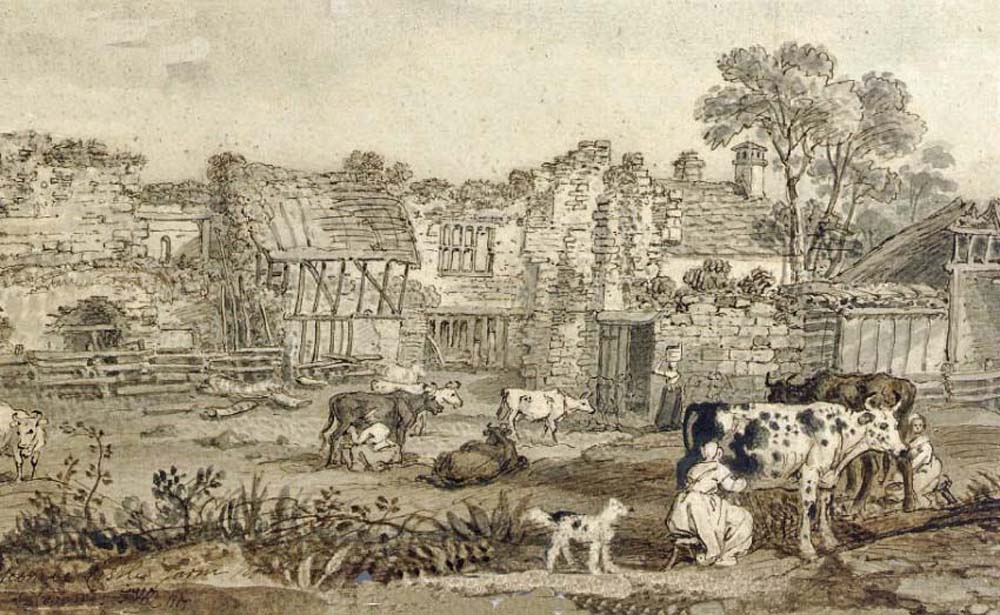
Colcombe Castle Farm House, near Colyton as it was painted in the early 19th Century by James Ward. Now only a ruin in a field exists to remind us of this once important Castle.


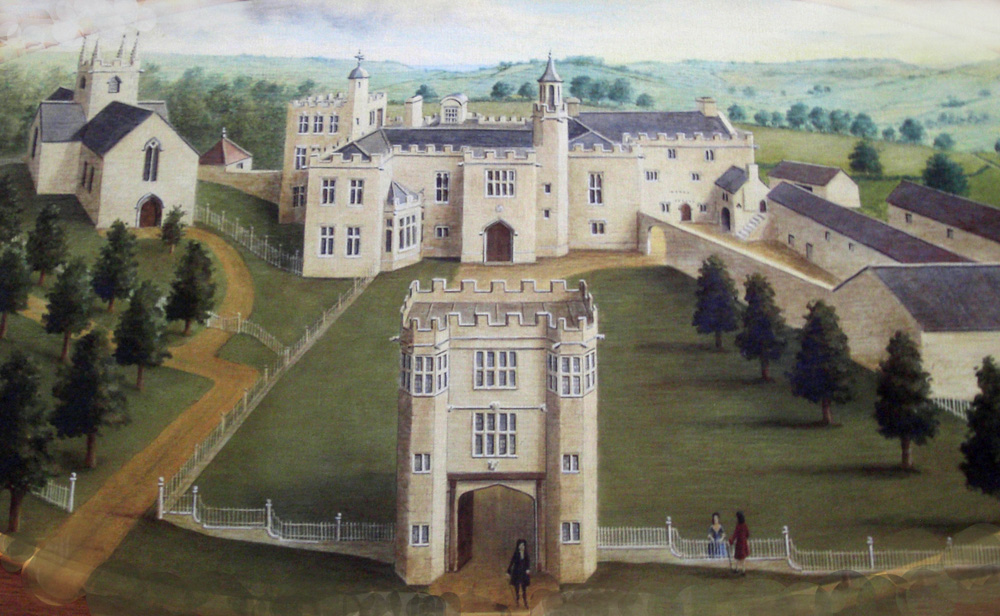
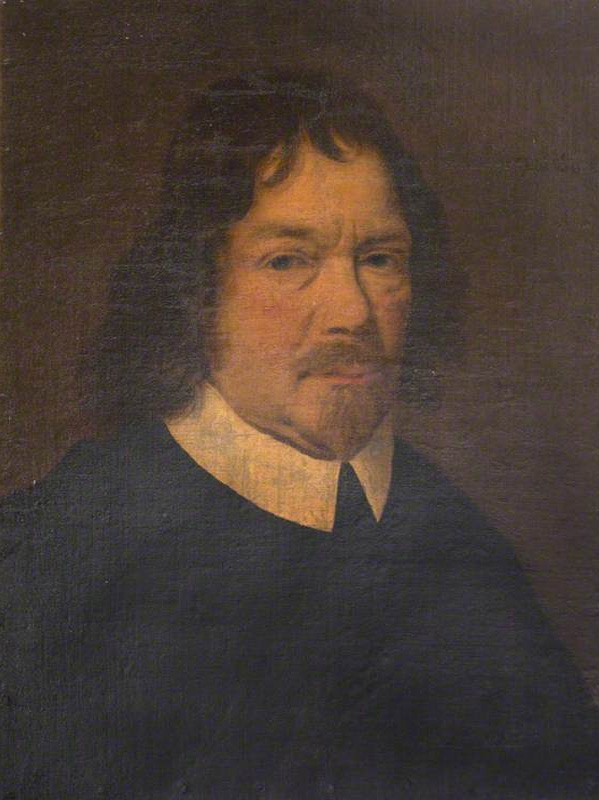
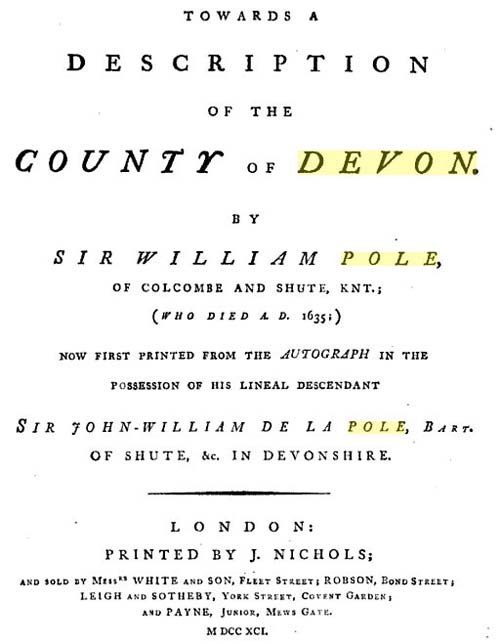
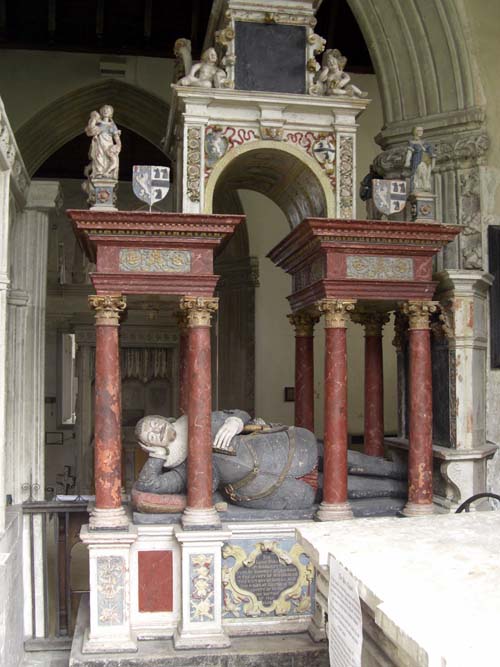
.jpg)
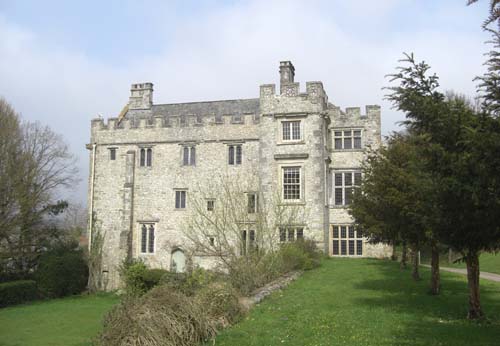
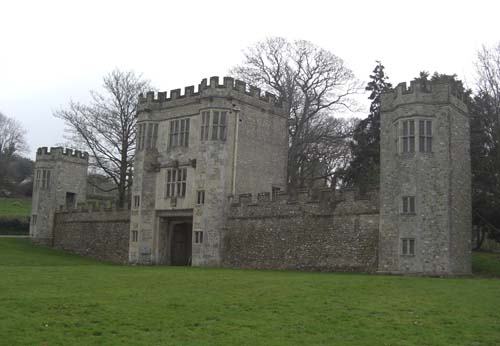
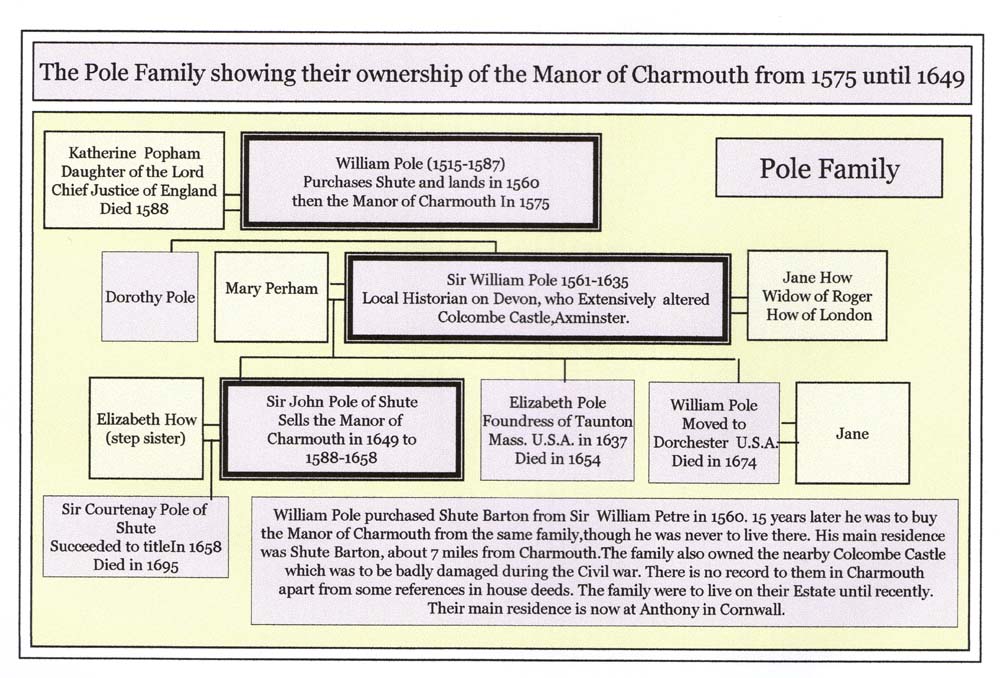
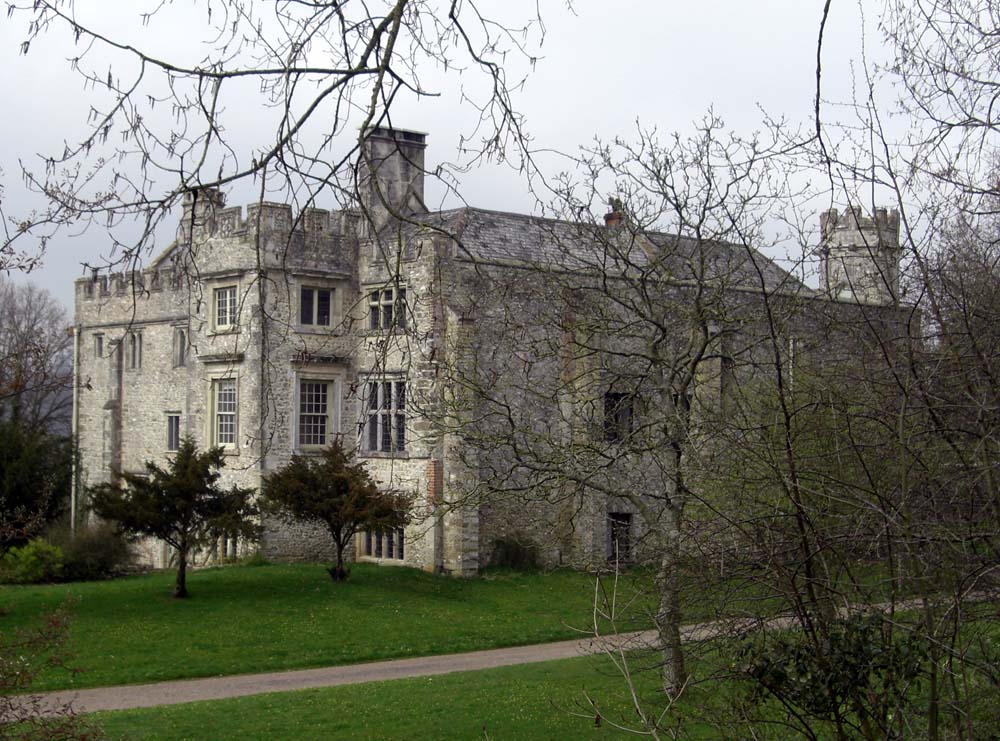

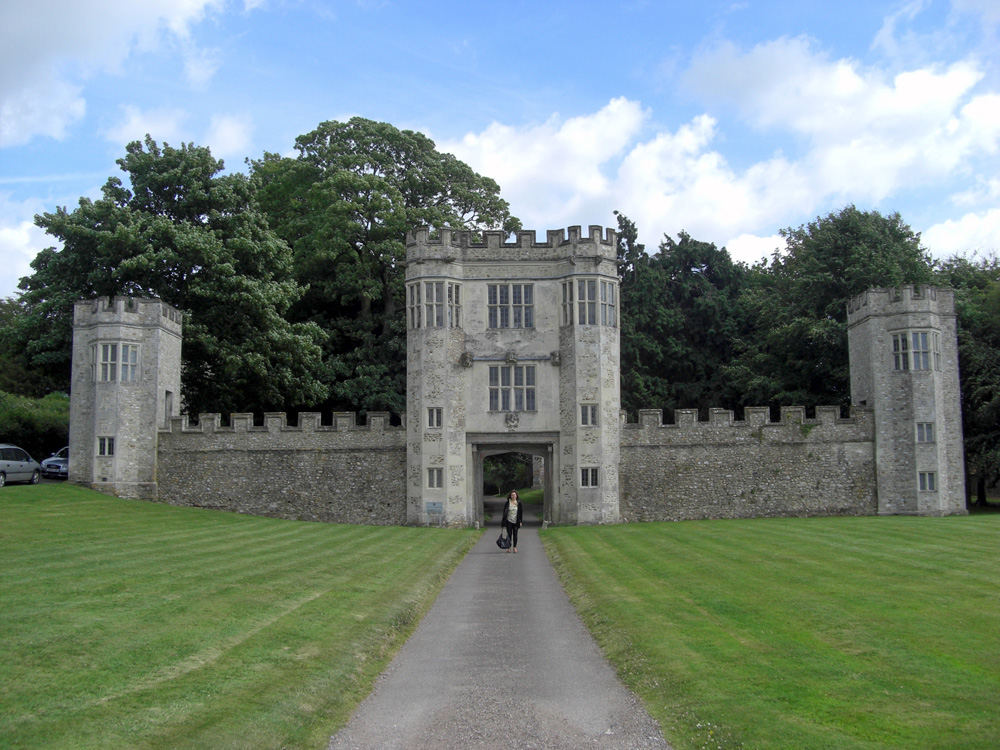
1575-1648 Pole Family
The Pole Family seem to have left no lasting memorials in Charmouth , though they were to own it for a long time. It was one of a number of estates they had purchased in proximity to their seat at Shute, Axminster. Their elaborately carved tombs can be seen in their private chapel in Colyton.
(i) William Pole (1515-1587)
William Pole purchased the " house, materials and furniture of Shute House for £300 in 1560 from Sir William Petre. Shortly after this, he acquired the lease of an additional eight score acres of land at Shute. Later in 1575 he was to have further dealings with Sir William Petre when he purchased the Manor of Charmouth.
William Pole had possessions throughout many parts of the neighbourhood—Kilmington, Musbury, Dalwood, Colyford and Colyton and Seaton, for he left bequests of twenty shillings each to old people in these parishes. He died at Shute in 1587 in his seventy-third year, and was buried in Colyton Church. His eldest son, only twenty-six years of age at the time, erected a remarkable monument to him there.
Shute Barton, near Axminster is now owned by the National Trust and is open at certain times during the year and well worth a visit. The Poles main house is at Anthony in Cornwall, which is also open to the public and contains their family portraits and Archives.
(ii) Sir William Pole (1561-1635)
One of the more famous Lords of the Manor of Charmouth was Sir William Pole who meticulously recorded the history of Devon and its illustrious families. But it was not to be published until 200 years later by an ancestor, Prince to illumine his own work, The Worthies of Devon”. Educated at Exeter College, Oxford, coincidentally the same as the Petres he was a member of the Inner Temple in London, where he resided at times. He went on to be a Justice of the Peace in Exeter and later on Sheriff. He married Mary Peryham who was to have 11 children, depicted on her elaborate tomb in Colyton. He later remarried Jane, a wealthy widow of Robert How, Baronet, whose young daughter married her stepfather's son John. As well as Shute he owned Colcombe Castle which had been one of the seats of the ancient Courtenay family. Sir William made extensive additions and alterations, but practically the whole of it was destroyed in the Civil Wars. Its ruins today are off Colcombe Lane, north of Colyton.
(ii) Sir John Pole (1588-1658)
For many years Sir John was Member of Parliament for Devonshire, and lived in London for long periods.He was created a Baronet by Charles I in 1628 .Sir John lived through anxious times, during the later days of Charles I, and the Civil Wars. The Poles being always staunch Royalists About the time that the Parliamentarian forces destroyed Colcombe Castle a fire broke out in Shute House.
Sir John Pole and his lady lie buried in Colyton Church, where a magnificent and highly decorative Corinthian canopy is erected over the life-size effigies. The figures lie on their sides, back to back, the knight in full armour, and the lady in cap and farthingale.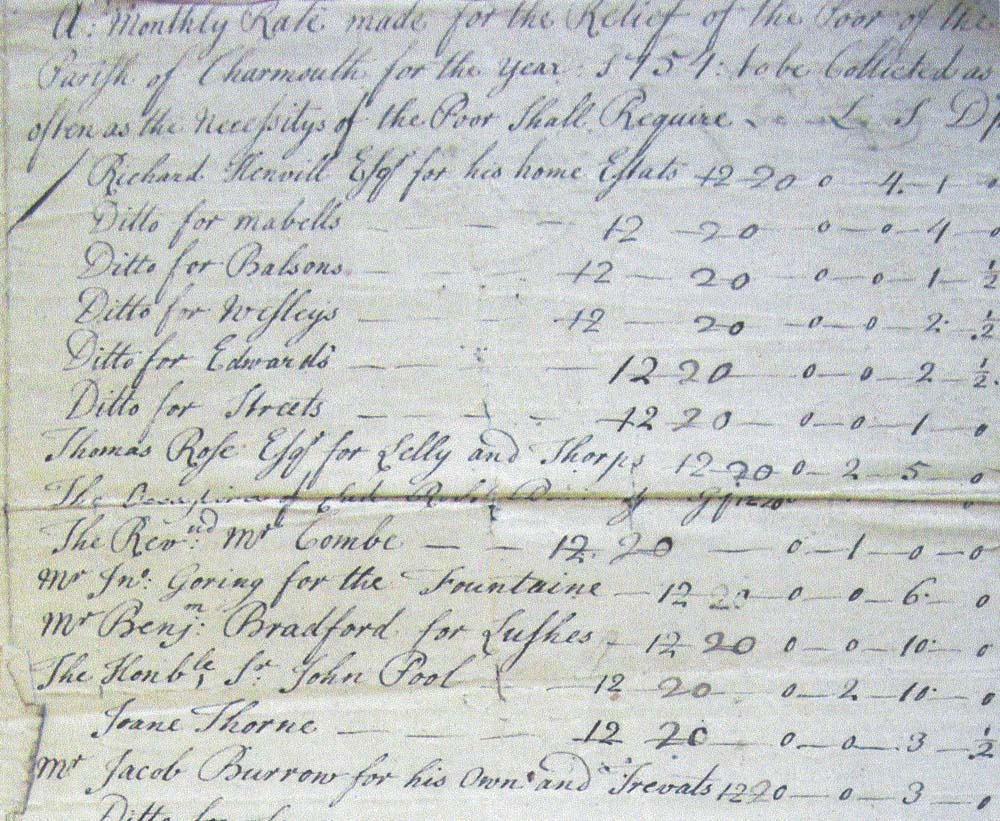
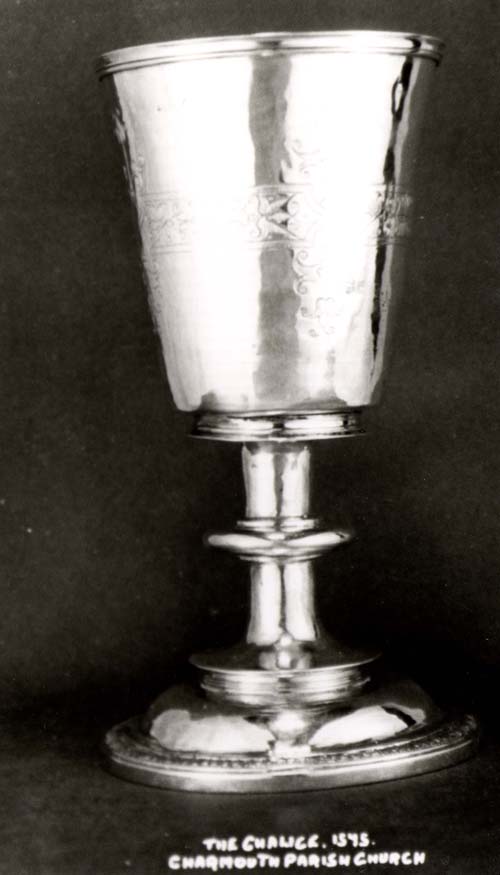
This Cup was produced by Lawrence Stratford, A Dorchester Goldsmith in 1575 and was given to the church by William Pole of Shute.
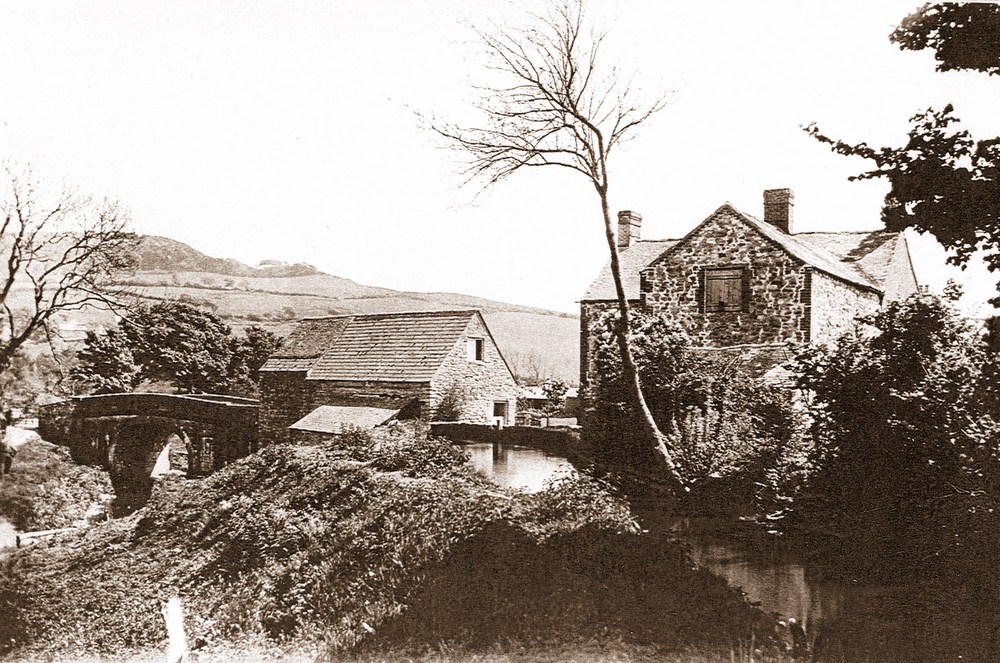
The Mill and its lands were kept back by Sir John Pole when he sold the Manor of Charmouth. They were not to sell the property until the end of the 18th century.